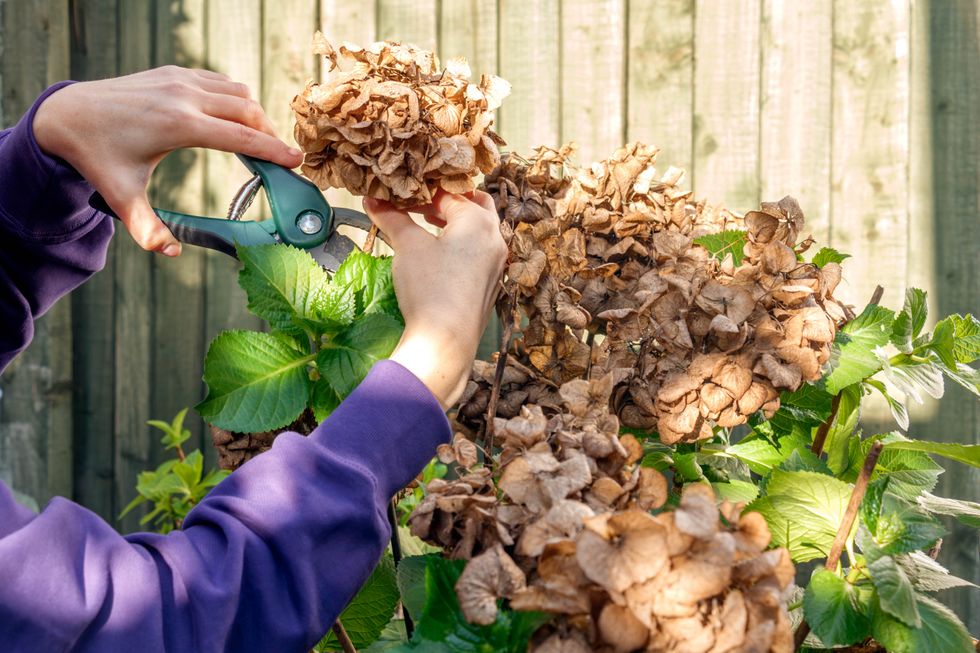Experts have told Britons to prune their plants before it is too late
GETTY
Fungi disease can cause plants to die and can affect human pathogens
Don't Miss
Most Read
Trending on GB News
Gardening experts have alerted Britons to prune their plants this winter to prevent fungi disease from spreading.
Fungi disease can cause plants to wither or potentially die whilst also damaging fruit and vegetables. It can impact human pathogens too possibly harming the lungs, brain and sinuses.
Josh Novell is a gardening expert at Polhill Garden Centre and he said it is very important to prune your garden before it is too late.
He explained: "Pruning is an important task for gardeners, as it allows your plants to grow healthier. However, poor pruning or avoiding the task in winter can damage your plants and even cause harmful fungal diseases to spread across your garden."

It is important to prune our plants to prevent fungi disease from spreading
GETTY
The expert added that the best time to prune plants is in late winter once all of the leaves have fallen off, but it can be quite difficult to spot if your plant needs pruning. Josh described the most effective ways to spot if your plant is dormant and needs attention.
The gardening expert said: "Use a sharp knife or your fingernail to gently scrape the outside of a stem. If the tissue underneath is green and damp, the plant is alive and ready to prune; if it's brown and hard, the plant is dead.
"Dormant plants will not show signs of leaves, stems, or flowers. Growth typically slows down or stops entirely in winter as the plant conserves energy. Once they become dormant, trees and shrubs will lose their leaves entirely.
"Dormant plants require much less water than actively growing ones. You may notice the soil staying moist longer when a plant is dormant."
LATEST DEVELOPMENTS
The expert laid out the best methods for once your plants have become dormant and need pruning.
He advised: "Make sure your pruners and other garden tools are sharp and clean. This helps make clean cuts, reducing the risk of disease. It is best to prune your plants when it is not as cold, and the air is dryer. This prevents your garden from frost damage when cutting branches and reduces the spread of waterborne diseases."
Josh said that it is vital to remove damaged wood but ensure the balance is right as too much pruning can weaken the plant.
He said: "It is easier to see your plants’ structure in winter, as most of the leaves in the way are now gone. Remove any dead, damaged, or diseased branches first to encourage healthier growth. Be careful not to remove too much wood in winter, as this can weaken the plant. Aim to remove no more than a third of the plant’s total branches."
READ MORE
- REVEALED: Britain's 'below the radar' plan to help Ukraine defeat Putin without sending a single missile
- 'I'm a GB News Member - here are three ways you can ensure the channel's survival and defend free speech'
- POLL OF THE DAY: Do you want another General Election now? VOTE NOW
- Britain must enact a Trump-style mass deportation policy...and I have a plan for going about it - Adam Brooks
- Nigel Farage just issued stern warning over China but is it valid?

It is important to not prune too much of the plant otherwise it will become too weak
GETTY
It can be difficult to know how to approach each individual plant. With the different shapes and structures, it is valuable to learn how to prune particular plants.
For rose bushes, the expert said: "Once the plant is fully dormant, cut back the dead and cross branches to keep the plant’s shape and encourage healthy growth once spring comes. This will also promote better air circulation and reduce the risk of outbreaks of diseases."
Fruit trees, in particular apple and pear trees, can contain powdery mildew and certain fungi like 'apple scab'. Josh advised: "Begin pruning the fruit trees in late winter, just before spring. Prune out dead, diseased, and crossing branches and thin out overcrowded areas which will improve air circulation and allow the trees to photosynthesise."
Raspberry and blackberry bushes can be affected by fungi like cane blight and spur blight in the winter. Josh suggested: "Remove old, diseased canes that have already fruited at their base and thinning out crowded canes, you improve air circulation and allow the bushes to get enough sunlight."
He also said to prune ivy bushes to improve air circulation and engage sunlight on the plant. He said: "Just before spring, remove dead, diseased or weak steams and thin out crowded branches. You can identify diseased ivy by looking for dark brown or irregular spots."







